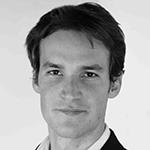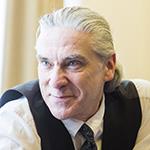Darker evenings, colder weather and plans for Christmas will be high on the list of small talk topics for patients and practitioners this November.
Another more chilling conversation point might also be seasonal affective disorder (SAD), an unwelcome side effect of getting less natural sunlight also referred to as the ‘winter blues’.
SAD has moved further into the public consciousness, with recognised therapies now including light therapy. Products flooding the market have included SAD table lamps, alarm clocks and futuristic glasses. In addition to light therapy, lens tints have also been suggested to help patients suffering from SAD.
According to SAD.org, only 10% of the UK population now works outdoors, down from a figure closer to three-quarters two centuries ago. In addition, it noted that working days were getting longer and resulting in ‘a dramatic increase in light deficiency symptoms’ for some patients who struggle to maintain their circadian rhythms and subsequent mood.
‘In the distant past humans lived in the outdoors and were exposed to sufficient levels of sunlight the whole year round even in the northern and southern hemispheres. However, nowadays our lives are mainly carried out indoors due to work pressures, busy lifestyles and changes in social behaviours. With the advent of television and now the growth in computer, phone and tablet based entertainment we spend more time than ever indoors and miss out on the light cues our body needs,’ the organisation said.
Melatonin is one hormone closely linked with SAD, and thought to be an underlying driver for the circadian rhythms that govern our metabolic processes. It is found in higher serum concentrations during the hours of darkness but lower concentrations during daylight hours.
Seeing the light
A range of light therapy and optical tints have been designed to tackle light deficiency.
Indeed, SAD.org has provided a list of white light and blue light products that can be used to effectively replicate sunshine. This included the use of LED Lightboxes as well as traditional tube bulb lights that were proven to be medical devices.
However, the organisation said while dawn simulators treated some of the symptoms of SAD, they could not be classed as a medically proven SAD light.
Belgian company Luminette has produced SAD light therapy glasses since 2005, with strongest sales in France, Belgium, US, Netherlands and Switzerland.

Luminette managing director Eric Delloye (pictured) told Optician there was stronger awareness of SAD among the UK public than in most other European markets. However, the company had only seen moderate success in the UK and mainly through digital channels such as Amazon. In France and Belgium Luminette also used pharmacy and optical practices as effective sales channels.
Delloye said: ‘I would say the opticians is a natural shop for light directed glasses and we have received quite a lot of requests from opticians to use our glasses.’
Having witnessed the light therapy market for more than a decade, Delloye did not believe there were more cases of SAD that needed treatment – pointing out that hours of darkness remained a constant.
‘SAD is not getting bigger but what has increased is the interest in light therapy and the awareness of consumers about SAD, especially in the UK,’ he said.
Meanwhile, in markets with extreme hours of winter darkness, such a Scandinavia, he had seen no extra demand for light therapy. ‘Naturally you would think these populations would be affected more but from my experience they do not seem to respond how you would expect.’
He said the Luminette glasses were more practical than stationary lamps that require users to remain in the same place for half an hour at a time. ‘If this therapy is not convenient and demands too much you will simply quit the therapy. But you can carry out your daily routine with Luminette glasses on.’
Delloye also pointed out that by using glasses for light therapy, the distance between the light source and the face was always fixed – a more difficult task using the light source.
Boosting natural sunlight by heading for the outdoors was recognised by healthcare providers as the most practical measure of all, while yellow tinted lenses have also been marketed for the disorder.
Knowing your role
Many practitioners will be aware that SAD is also referred to as ‘winter depression’, and the College of Optometrists has issued guidance on seeing depressed patients. In its guidance College members were advised to only work within the limits of their professional competence.
The guidance said: ‘If you observe a sign or symptom which you cannot manage within your competence, you must refer patients to an appropriate practitioner who is registered with a statutory regulator.
‘In the case of depression, that would typically be a person’s GP and those affected by depression should be referred to a relevant expert for help.’
The College does not offer specific guidance on seasonal affective disorder (SAD) and said evidence on light therapy as preventive treatment for patients with a history of SAD was limited.
Indeed, the market for light therapy treatment in the UK still lags behind other countries.
Nonetheless, the lifestyle benefits of exposure to natural light and the outdoors go beyond SAD. The emergence of a ‘myopia epidemic’ has increasingly called on children to spend more time outdoors and less time glaring at computer screens.
Furthermore, in August a team of scientists from Ulster University established a link between myopia and melatonin levels. A group of young adults were assessed over a period of 18 months, during which their melatonin levels were measured first thing in the morning after fasting. It was found that those people who were short-sighted had over three times more melatonin in their system than those who were not.
The objective was to determine whether disrupted sleep patterns in childhood were related to short-sightedness and whether behavioural interventions and sleep pattern management could serve as a low-cost strategy to managing the condition. Findings follow on from previous research conducted by the university that found there were now twice as many post-primary school-aged children in the UK diagnosed as short-sighted than there were 60 years ago.
Professor Saunders said at the time: ‘If, as we suspect, disruptions to the natural body clock are shown to be influential in the development of short-sight, modifications to lifestyle that target strengthening healthy sleep and activity patterns could positively affect both general and eye health.
‘Ulster University’s previous research has already shown that children who spend less time outdoors and less time in sporting activities are at increased risk of short-sight, and this new research may go some way to explaining why that is the case.’
Therefore, as the link between vision, time outdoors and related health conditions deepens, researchers are casting new light on the impact of modern lifestyles.

Research has come to light
‘I cannot overestimate the importance of light with regard to vision. Older readers will remember well having to pass an exam on lighting and lighting design in the old professional qualifying exams. It is sad that this no longer is a requirement, when many of our patients benefit greatly from good advice regarding lighting and light protection.
‘Recent research has emphasised the significance of specific wavelength visible light in stimulating the light responsive ganglion cells which help to regulate melatonin production and thus the metabolic clock.
‘Health issues linked to artificial lighting, non-diurnal shift work patterns and excess pre-sleep light exposure have been confirmed now by good solid research. Eye care practitioners need to be up to speed in this area as they should be the professionals best placed to offer appropriate advice regarding light influences.’
Bill Harvey, Optician clinical editor

